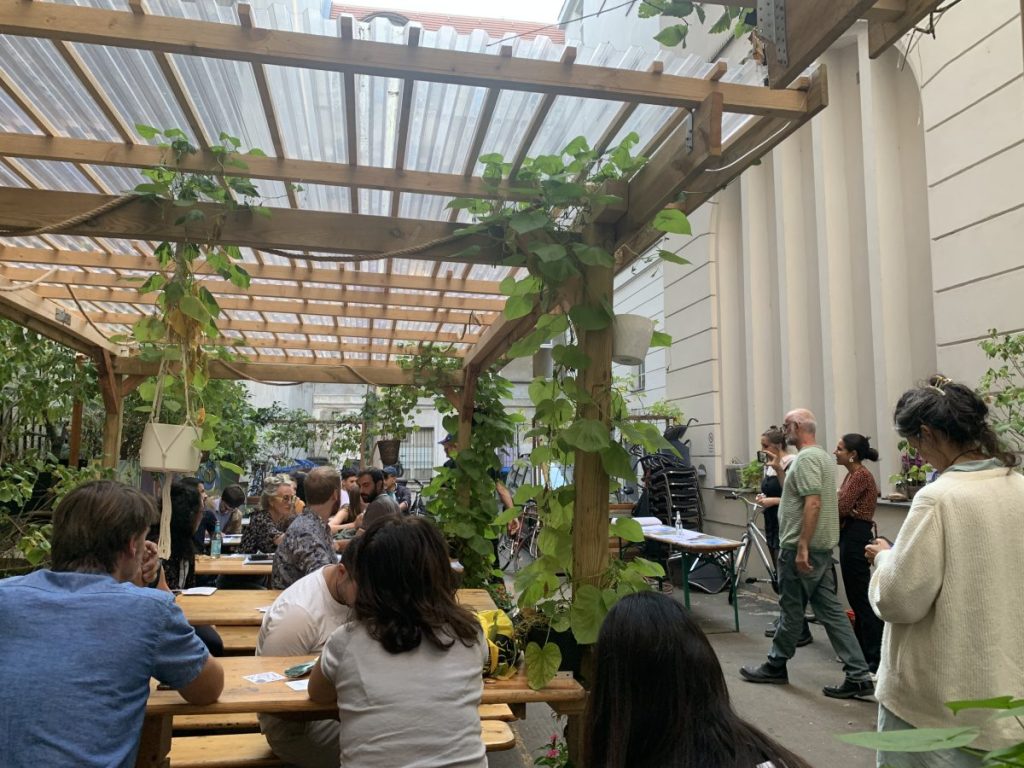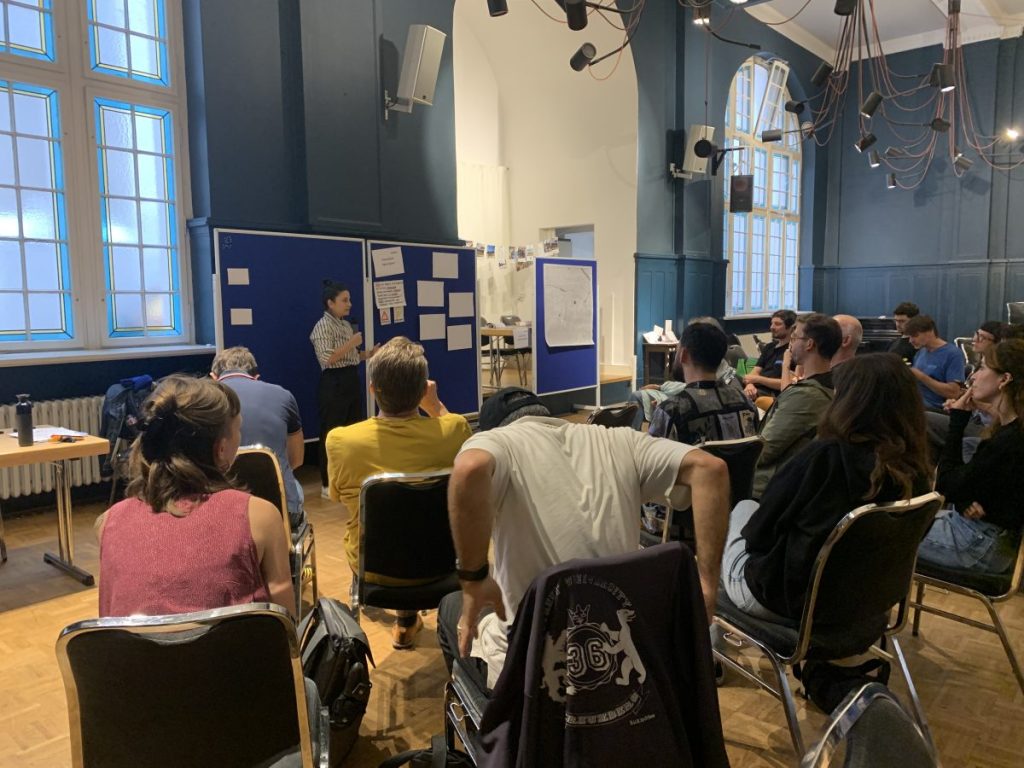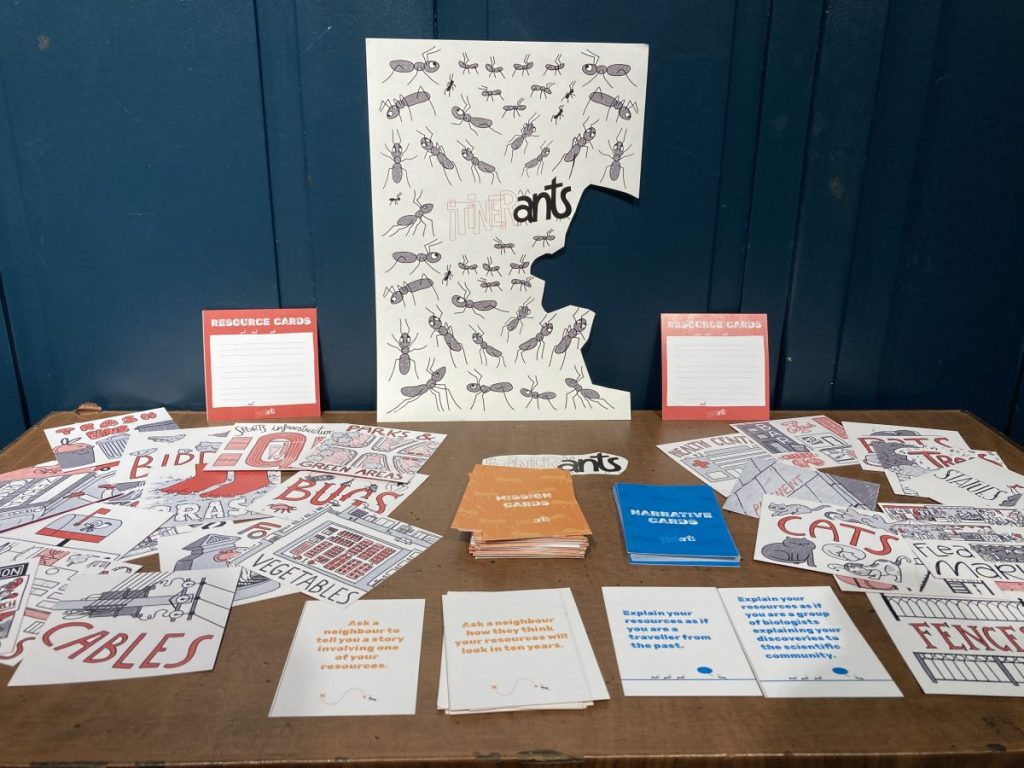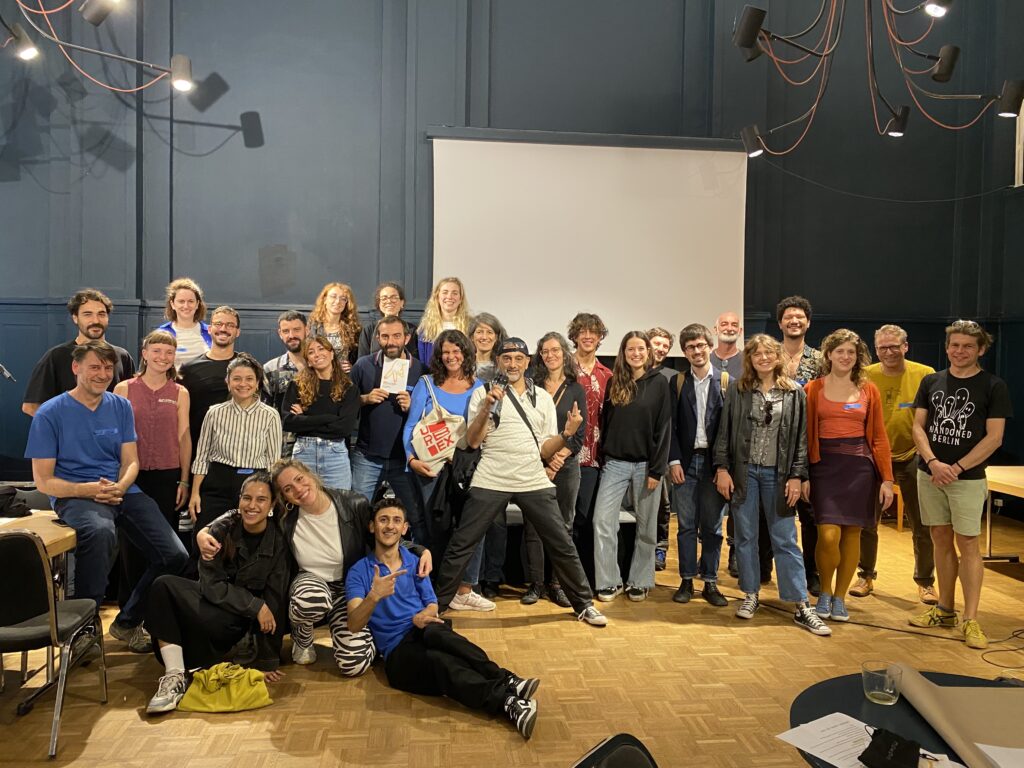UrbEXplorers conference report
Urbexplorers was the final multiplier event of the Erasmus project UrbEX. The multidisciplinary conference organized by Tesserae promoted urban exploration as a methodology for empowering youths, overcoming their vulnerabilities, and encouraging their participation in communal life. We engaged youth workers, scholars, activists, and policymakers in a conversation about the potential of neighborhoods as learning spaces. A particular emphasis was placed on gaming and storytelling approaches for the education and involvement of vulnerable young people.
During the conference methodologies and tools developed through the Urbex project were presented, and the new UrbEX network – connecting organizations interested in expanding the potential of spatial practice with youths – was launched.
More detailed information about single projects can be found in the presentations’ abstracts, as follows.
Day 1 (28th Septmber 2023)
Session 1: TOOLS AND METHODS FOR EXPLORATION

EDULANDS MAPS AS COLLABORATIVE TOOLS FOR EDUCATION – Monica Gonzalez Candela, Universidad de Murcia, Spain
Collaborative learning tools to connect school and landscape (eduLANDS) is a 2-year Erasmus+ project. It was born from the need to promote a change in the educational framework capable of generating social and environmental transformation. Our main objective is to connect the school with the surrounding landscape, understood as a biophysical, human (contemporary community and ancestors), and subjective dimension (sensory and emotional), through collaborative and adaptive methodologies that break down the traditional barriers of the closed classroom and generate spaces for contact both inside and outside the school. The need to interrelate eco-social contents and the local community, and to integrate them into the regulated educational contents of primary and secondary education, has allowed the development of methodological tools that are easy for teachers to implement. Among the methodologies and resources generated in eduLANDS, the creation of landscape maps in schools, of a library of open educational resources (OERs), and that of a digital tool based on a force-directed graph system as an interactive visual tool for browsing, searching and filtering the OERs hosted on the eduLANDS website, are worthy of note. The creation of this tool includes the use of taxonomic labels with which the OERs are identified, and which correlate educational projects, members of the nearby community and documentary resources.
In order to test the potential of these tags, we have worked in an experiential and collaborative way through the creation of a large physical map with information collected from the attendees of the eduLANDS_FEST’ event (January 2023, Murcia, Spain). We used 3 content sources that together generated an initial database of 60 information resources from 15 eduLANDS educational projects. The taxonomic system used to categorise the resources was defined according to the eco-social and educational goals of eduLANDS. Participants filled in cards with their personal/institutional information. The main categories of the card contained various subcategories such as “theme/content of interest to the school”, “spatiality”, “type of community involved”, “methodology or type of activity desired”. The installation was presented on the wall of the entrance and exhibition hall of the festival. The attendees’ information cards were placed on the wall, and both the areas of work and the geographical origin of the attendees were identified. Finally, using coloured threads, the main categories were linked together with a local or international expert, two projects from the EDULANDS schools, and three attendees at the event. This project aims to raise awareness and value the importance of working through the community and the development of strategies that allow collaborative participation to generate new visions.
We proposed the creation of an eduLANDS Shared Map for those attending UrbeXplorers.
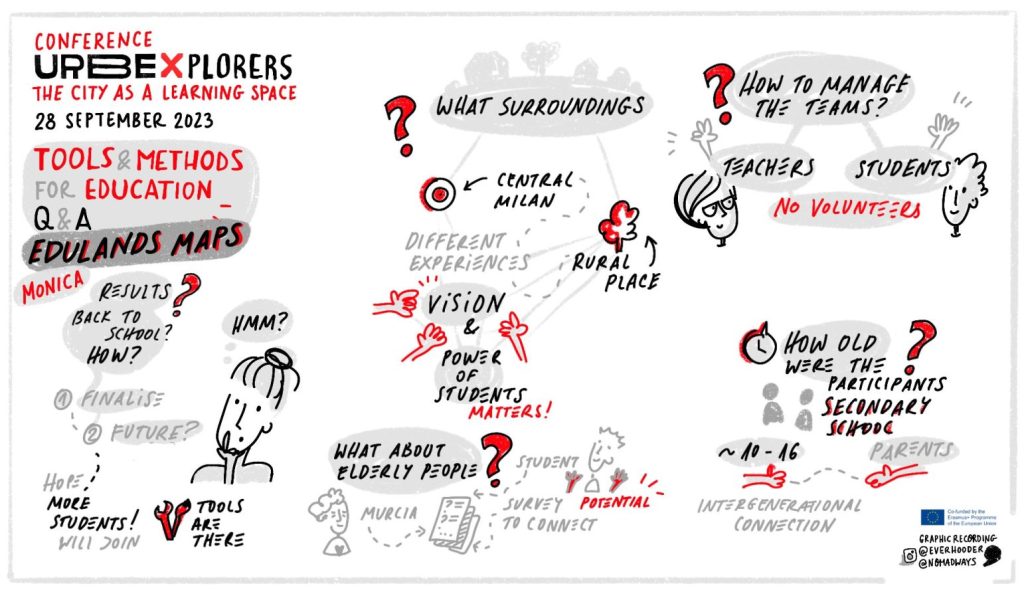
LUDIC URBAN EXPERIENCE “CASSANDRA”. CASE STUDY OF A COMMUNITY MAPPING WORKSHOP FRAMEWORK – Tiago Mindrico (Ph.D. Student at Faculty of Fine Arts University of Lisbon (FBAUL), Interactive technologies institute belonging to LARSyS Lisbon, Portugal) and Felipe Salazar (Master’s student at Faculty of Fine Arts University of Lisbon (FBAUL) Lisbon, Portugal)
Henri Lefebvre’s concept of “right to the city” centers around the idea that urban spaces should be designed in a way that allows for inclusive participation by all citizens from any age in shaping and utilizing them (1968). This could be achieved by encouraging a playful and ludic approach to urban space, a “ludic city” (Stevens, 2007). One of the key elements is the notion of the dérive, wandering through urban spaces that allow individuals to interact with and experience the city in a way that is not dictated by predetermined routes or destinations. This allows for a deeper and more diverse understanding of the city and the people who inhabit it. We propose a constructed situation, a playful framework workshop for community mapping, based on the concepts of the dérive and art/design-based action research methodology. “Cassandra” is a playful urban experience that proposes a rediscovery of the city through multiple senses. Aiming to foster a critical look at the socio-environmental conditions we experience in our everyday places. This rediscovery in a playful way culminates in individual maps, mental and physical, followed by a collective debate on sustainability, about the present and the future of our cities. As such, this case study deals specifically with the experience carried out on 12 November 2022 in the library of Belém in Lisbon, where a group of inhabitants experienced the city from a social and environmental point of view through a playful experience, that integrated storytelling and RPG (Role Playing Game) concepts. Three characters were developed, composed of a kit, each with a different associated story, relating relevant socio-environmental issues that could be observed locality. People were recording visual cues, thoughts, and objects from the route, and at the end, there was a shared discussion about their individual or family experiences. The discussion was fuelled with general questions from all the characters, to understand the different perspectives of the place. The story and the adjacent experiment were designed for Belém in Lisbon, but the methodology can easily be adapted to other cities, demonstrating its replicability component. By using an active approach, participants have shown themselves to be more driven to share their ideas, try new things, and explore different perspectives while involved in unitary urbanism. It helped to create a positive and supportive learning environment, which led to effective community mapping outcomes.

Session 2: URBEX4YOUTH
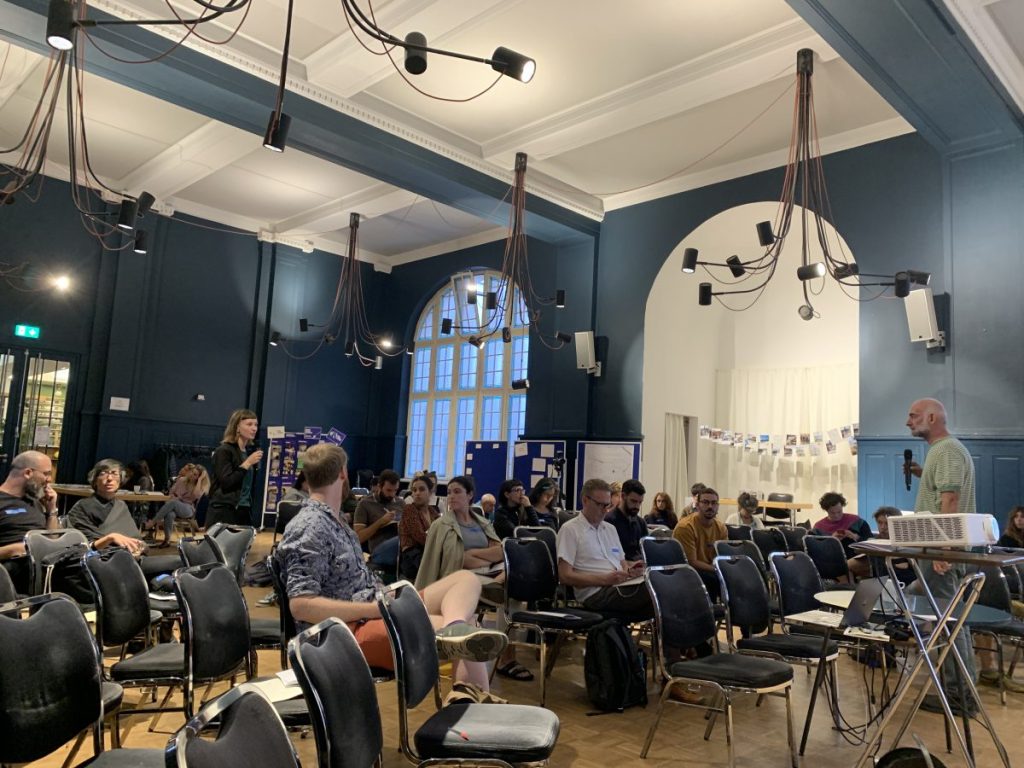
URBEX HANDBOOK – Lorenzo Tripodi, Franziska Füller, Tesserae
The UrbEX handbook is the result of pooling ideas and methods for urban exploration coming from the experiences of the five organizations partnering in the UrbEX Erasmus+ project. They draw on different backgrounds in education, urbanism, social work, participatory practice, art and design. It is directed at youth workers, educators, and civil servants who work with youths and/or in disadvantaged urban contexts in processes of social inclusion, empowerment, contrast to school drop-out, etc. It aims to provide ideas and tools to employ spatial exploration methods with youths. The overall objective is to connect and provide tools to different organizations and individuals who share an interest in this innovative field of action/research. The handbook is structured in three sections. The first introduces the idea of urban exploration as an educational method and proposes a few pillars for the UrbEX approach. The second, conceived as a set of questions, examines in five chapters the essential steps necessary to realize an educational project of urban exploration with youth and is completed with examples of good practices, methods, and resources. The third section proposes a collection of tools and exercises for designing, facilitating, and evaluating urban exploration at different moments of the process.
URBEX LOCAL LABS IN LISBON, CAHORS, BERLIN, PALERMO, SEVILLA – Parallel presentations
A special slot was created during which the partner organizations presented the results of the application of the UrbEX method in five local labs with youths. Short presentations were held at separate tables, and the participants had the possibility to rotate among them or stay for a longer discussion of some of the activities realized in Lisbon, Palermo, Cahors, Sevilla, and Berlin with different associated partners and target groups.


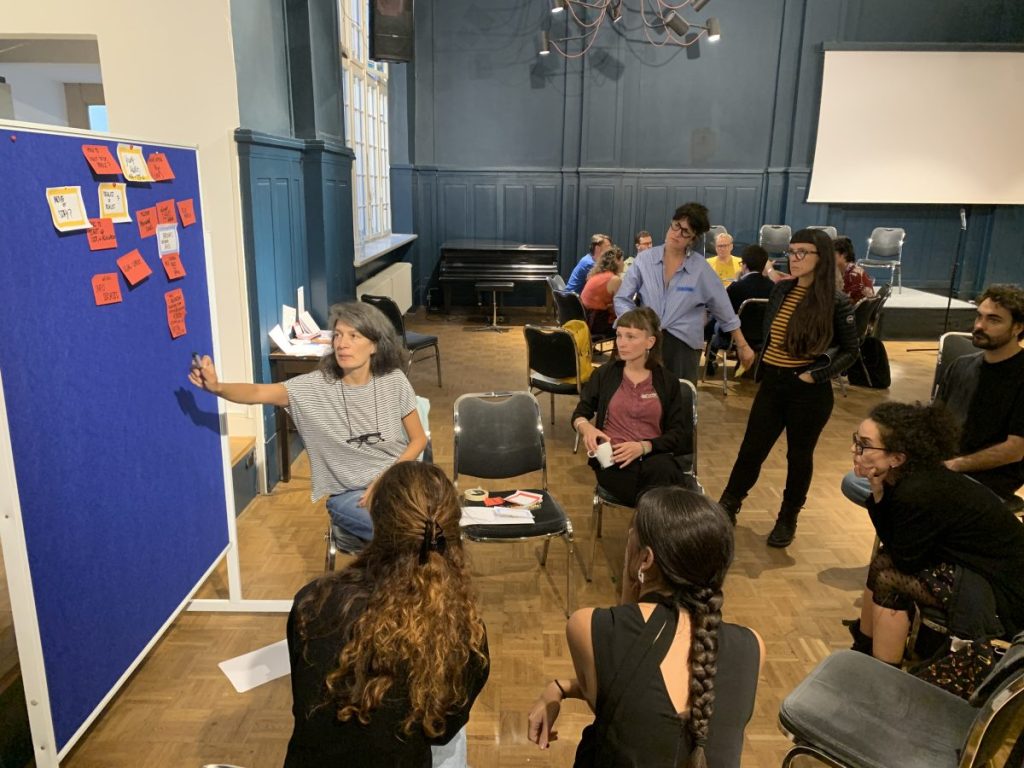
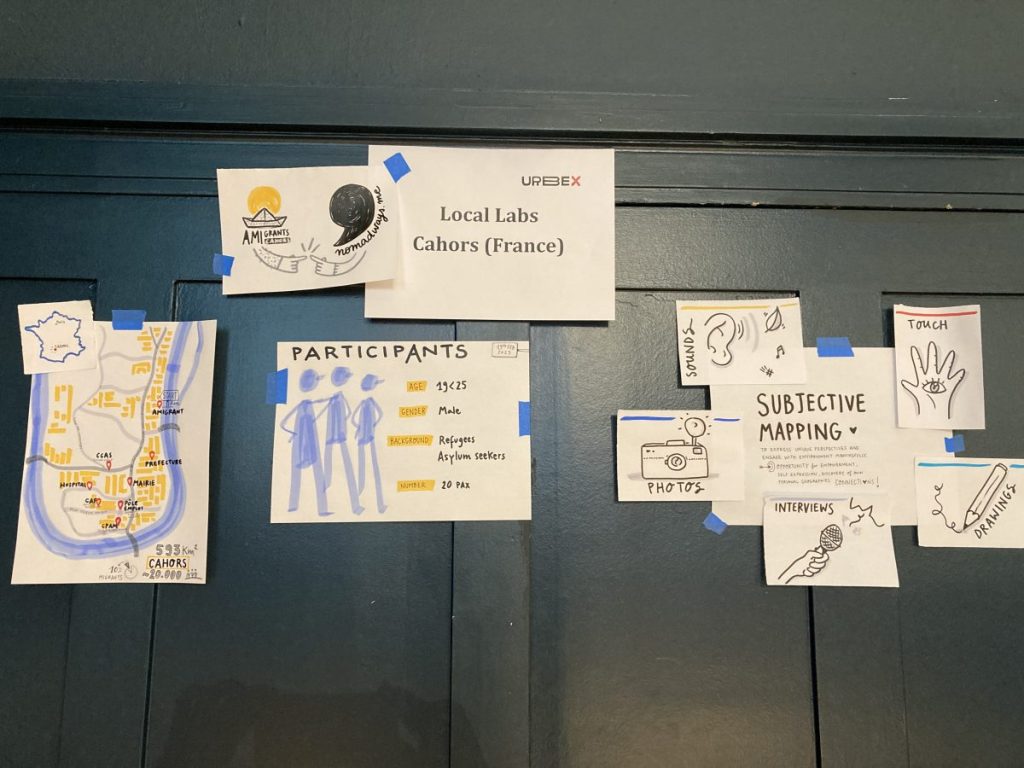
ITINERANTS – URBEX TOOLKIT – Rosalia Gutierrez, Marina Godoy
The URBEX Toolkit supports groups of youngsters in the process of urban exploration of their neighborhoods. It consists of itinerants, a modular game that can be adapted and implemented to different spaces and needs; and an annex with methodologies, games, and ideas to find inspiration or experiment in your local space.
itinerants is an adventure game to explore, imagine, and propose transformations for the cities we live in. Your neighborhood is the board for this game, and a series of steps will make you rediscover it from different perspectives in order to imagine alternative more sustainable, and liveable urban spaces and propose them to your neighbors.
Ant colonies are complex societies that have been cooperating for over a hundred million years, much longer than human societies – and they hold basic functions in most urban ecosystems: they pollinate plants by coming and going, spread seeds, clean our streets from waste and air the soil, among other things. itinerants turn to ants as one of the companion species that are present in almost any neighborhood across the world. We are the ants in itinerants. Unnoticed, we explore our surrounding areas, digging invisible tunnels between the current urban spaces and the imagined ones to pollinate and spread seeds of more sustainable cities.
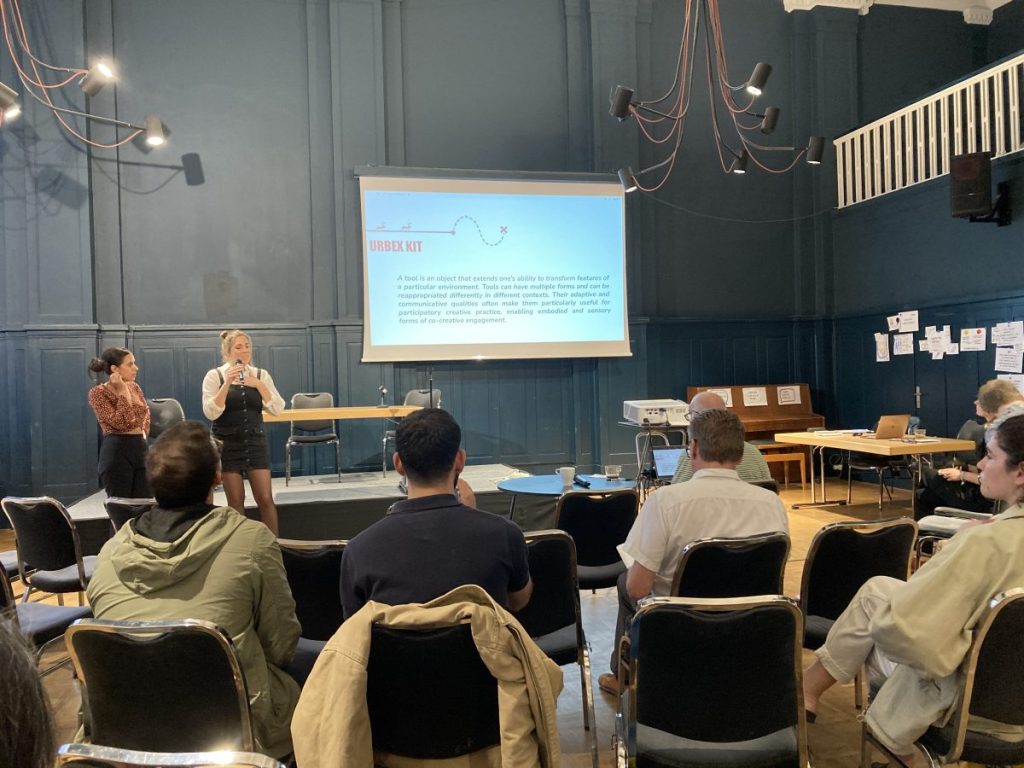
Session 3: GAMING THE CITY
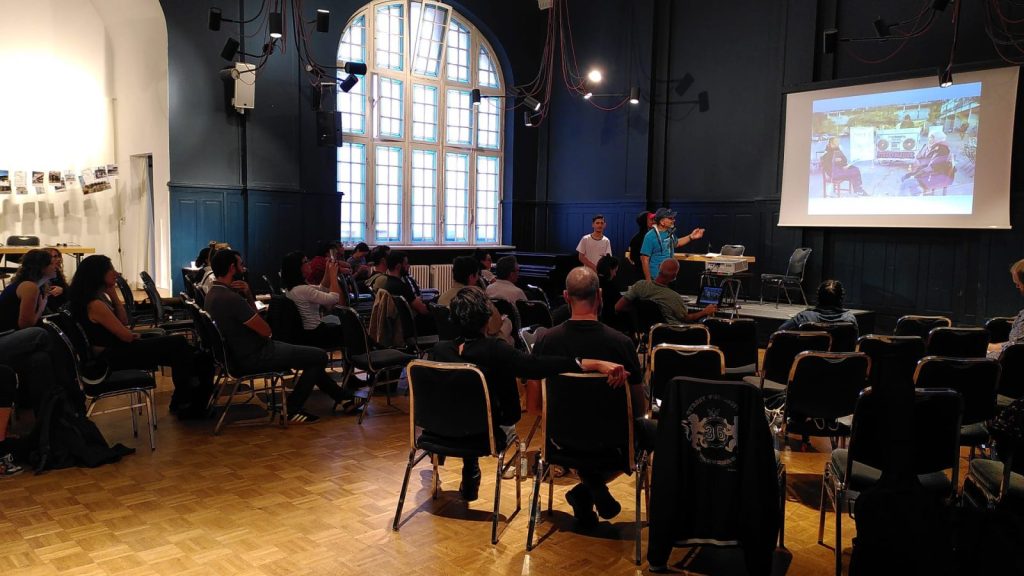
FUORI BORDO – cheFare
Fuori Bordo is a project developed by Codici Ricerca e Intervento – a social research and intervention cooperative – in collaboration with cheFare – an agency for cultural transformation- and co-funded by Fondazione di Comunità Milano. It was launched in September 2020 and completed in September 2022. The project operates in Milan’s Municipality 5 and in the municipality of Rozzano (or Southern Area of Milan) to achieve its expected result: to set up a system of prevention and connection to community ties, in the face of the risks of social exclusion in emergency cases, as occurred with the pandemic.
The area of intervention encompasses an area in which, in recent years, there have been complex redevelopment projects financed with public and private resources. In this context, all these social interventions and cultural offerings have not always been well-spread and polycentric. Indeed, along the entire axis of Municipality 5, up to the neighboring municipality of Rozzano, there have been several fracture points: these marks have highlighted a tendency towards marginalization and social disintegration, despite the fact that there was a fair distribution of social housing and residential homes in the area. This led to the area being perceived as remote and isolated from the center, a feeling that was further exacerbated during the pandemic.
Fuori Bordo planned two actions, a research and a workshop stage:
- A research phase on four clusters – school, socio-educational services, cultural associationism, solidarity voluntary work – to understand who has ‘gone off the radar’ of the services, aiming at investigating the reasons and mechanisms of exclusion.
- A series of participatory workshops through which – thanks to the involvement of an artist – a collective and interactive device was developed, capable of evoking the experience of the pandemic in a symbolic and playful form.
These are separate actions but related closely to each other. The final target groups were the most vulnerable individuals and families, the referees and operators of the service organizations of the four strands.
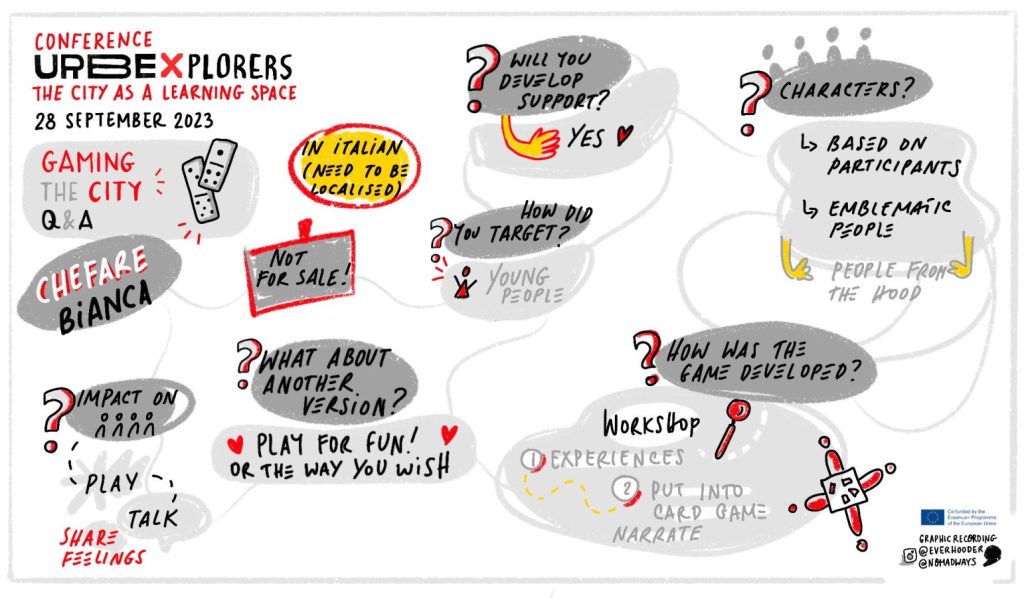
STREET RADIO BLASTER – Giò Di Sera, StreetUniverCity Berlin
The StreetUniverCity Berlin StreetBlaster is a mobile audio unit that runs self-sufficiently and is battery and solar-powered, providing us with the climate-friendly power we need for our open mike sessions and musical performances. The Street Blaster as a youth work Mobile Station (from the street for the street) is not only suitable for outdoor workshops, as the open radio-podcast workshop invites young people to discover the medium of radio themselves and to participate: as spontaneous or returning visitors, everyone – even without prior knowledge – can get a taste of digital radio podcast and post-production, moderation and interview techniques. In addition to the radio workshop team hereby also makes you want to discover the hip-hop subculture in regular Rap-FreeStyle-Jams.
The “Rap & Radio Speech Corner” built by Di Sera Media is a mobile music station in the optical style of a modern organ grinder and equipped with the latest technology – becomes the associated “mouthpiece” of Berlin’s street past as well as current stories and sounds around the central and peripheral Berlin urban areas.
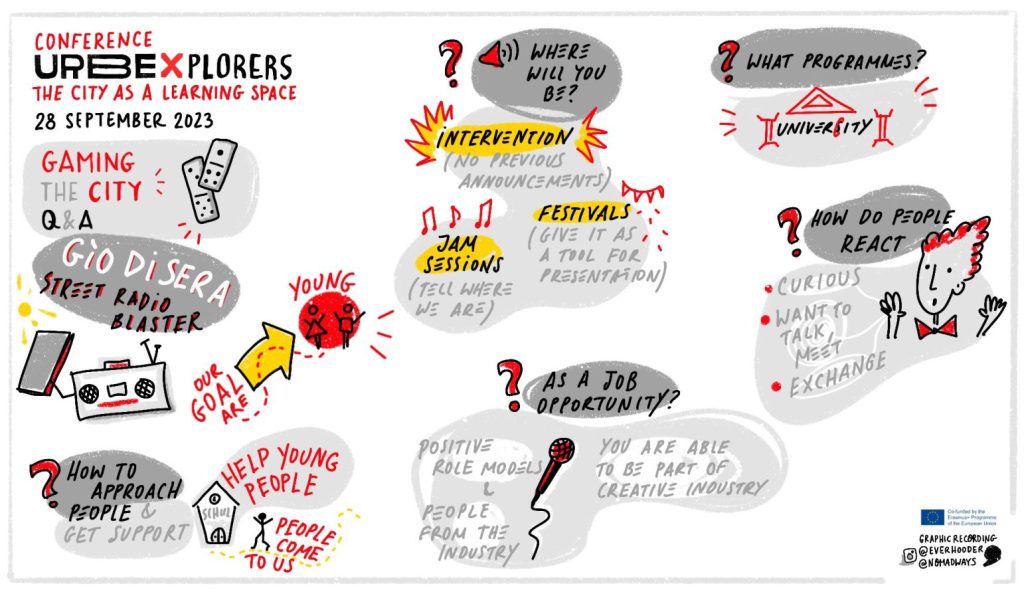
ALTERNATE REALITY GAMES AND CIVIC MEDIA. DIGITAL AND PSYCHO-GEOGRAPHICAL INTERACTIONS IN URBAN SPACE – Felipe Faillace Salazar, (Master’s student at Faculty of Fine Arts University of Lisbon (FBAUL) Lisbon, Portugal)
The theme “PlayFul Cities” has already been used in participatory and collaborative projects for some years. Going beyond the virtual, it also uses collaborative games (alternate reality games), social dynamics, and interactive sculptures to bring citizens together and transform them into engaged citizens. Similar to a game, it transforms cities into a large board where, through playful and collective activities, it invites citizens to transform the spaces where they live and transit, into a participatory, collaborative, and fun experience. At the same time, more and more contemporary cities are being designed for people and their well-being. Through urban strategies and smart sensors spread across cities, private and government initiatives have been focusing on the concept of smart cities that are more accessible to those who live in them.
On this occasion, the “Mapa Afetivo Colab” project, held at the Belém Library in Lisbon, was presented. Relying on concepts such as affective mapping, psychogeography, and wandering as an artistic practice, the project seeks to develop a collaborative and social methodology that involves residents of neighborhoods in Lisbon. It encourages participants to develop a sensory diagnosis of the neighborhoods’ challenges and solutions through a playful, collective, and interactive activity, in which playing becomes a civic engagement tool. It uses walking and wandering around the city as a sensory exercise, so that participants, in their multiple lenses, can perceive, register, and experience the city in a deeper and more critical way. Thus, this project proposes an exploratory methodology, based on an investigation in arts and design (project-based research), in which theory and practice are interconnected, for the creation of a concrete project that can, in a playful and sensorial way, deepen how we perceive the cities where we live and move.
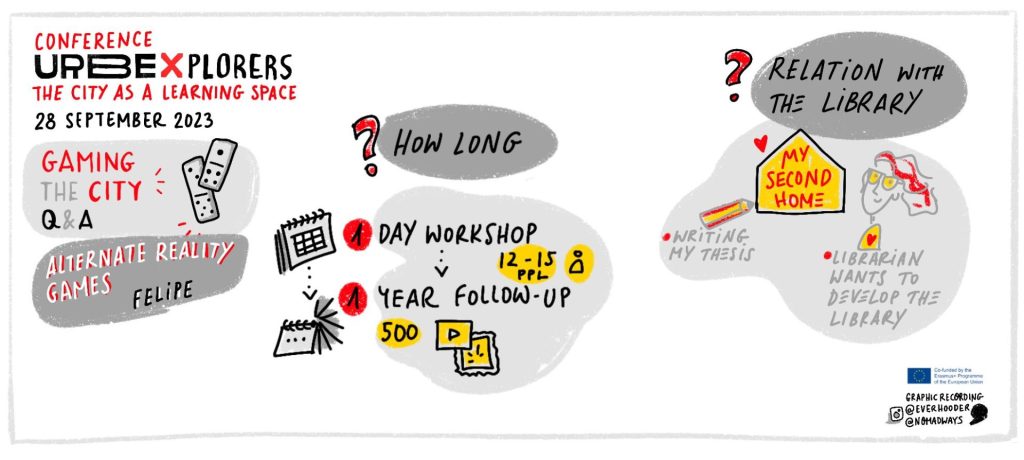
Day 2 (29th September 2023)
Inspirational talk
ABANDONED BERLIN – Ciarán Fahey

https://vimeo.com/abandonedberlin
Empire, two world wars, the division of the city, Cold War, collapse of communism, and subsequent reunification have all left their mark on the German capital. All kinds of people have come and gone, continue to come and go, and waste has accompanied their every move. Though there are fewer abandoned buildings now as Berlin undergoes a money-fueled building boom, the city is still home to a litany of derelict ruins and failed enterprises, each with their own stories of unrequited love and neglect. Berliners are fickle animals. If you go outside the city limits, you’ll find even more. Berlin is surrounded by old military camps that were vacated once the Red Army pulled out after the Cold War. Most of these were commandeered German camps. In the west of the city, American, British and French facilities set up to resist the “Soviet Bear” also fell into disrepair. There are factories abandoned after the fall of the Berlin Wall when the East German state wasn’t around to support them anymore, hospitals, houses, breweries, restaurants, cinemas, and more.
Ciarán Fahey has been exploring them since 2009, when he first braved the fence warning people away at Spreepark, an old East German fun park that failed to survive for long in the post-reunified city. He was enthralled by what he found and felt it was too good not to share. Since then he has been advising other explorers how best to find these places and detailing their histories on his “Abandoned Berlin” site. Photographs illustrate every post. It has since become a documentation project – an attempt to discover the past from what remains in the present.
Ciarán talked about the project, how he finds places to explore, what he looks for in those places, and what he has learned from all his years of digging and snooping.
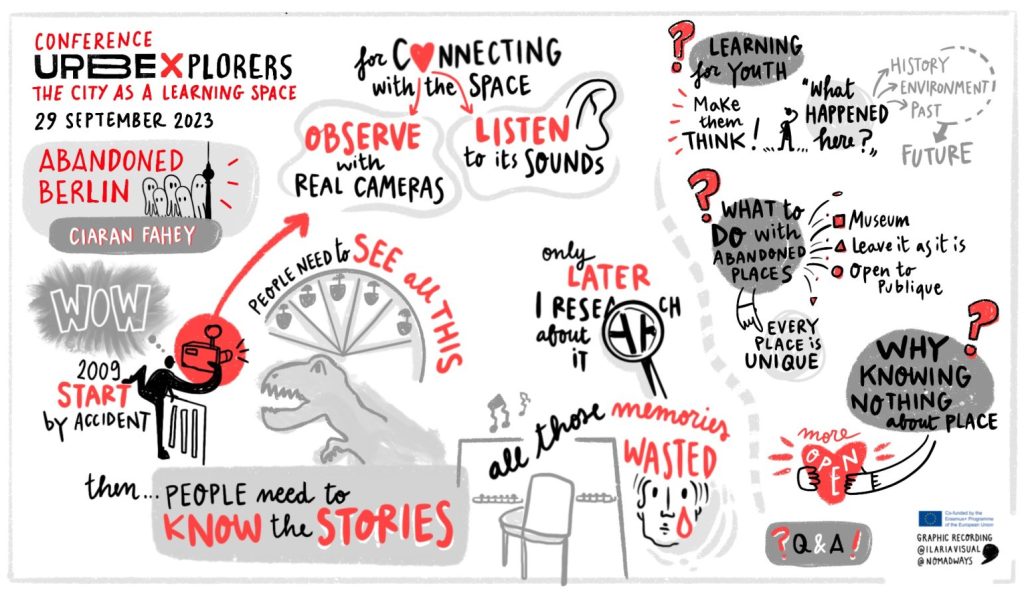
Session 4: URBAN EXPLORATION FOR INCLUSION

HYBRID SPACES AS A LEARNING TOOL FOR YOUNG PEOPLE – Raffaele Giovine, Municipality of Caserta/City Councilor
In recent years hybrid spaces were born in many Italian cities where the desire for change of many young people under-34 has found a home. Many abandoned spaces, resulting from city transformations, have been recovered by communities in different ways in regard to the relation with the institutions. Some examples are: Pacts of Collaboration, civic uses, and calls for reuse of assets confiscated from organized crime. In these places, young people self-organize to offer community services and thus the places themselves become real places of learning. Often those who act these actions of mutual care do not have a suitable educational background but learn by doing, constantly putting themselves on the line. The people who go through these experiences combine alliances, professions, and knowledge in an original way. The main capacity developed is that of the “bricoleur” which is the ability to design innovative public policies starting from what already exists, which is often barely rich and fragmented. Therefore it’s clear that these places of experimentation are real schools of learning, where new expertise, professions, and new attitudes are born. In some regions of Southern Italy, real incentives have been set up for the recovery of places, favoring youth participation in order to increase employment. These processes often lead to the start-up of true social enterprises. Young people and their contagious enthusiasm, well regarded by Italian society, often are able to involve the local community (especially the elderly) in processes of increasing responsibility and comanagement of public space: in this way it’s possible that an abandoned space becomes a place that a community begins to dwell again, endowing it with new meanings. One of these experiences that we intend to describe is Villetta Giaquinto, a public park recovered in Caserta, where a group of young people joined together with the elderly and families of the neighborhood and created a garden community through a Pact of Collaboration, stipulated with the Municipality. The main activities include maintenance and custody of the park, urban gardens, street art, production of jams, outdoor cinema, and cultural initiatives that gave life to a “neighborhood house” where many activists work. This experience also produced a network of civic experiences that identified a candidate for the Mayor elections of the City in 2021. The people who took part in this experience became authentic community managers, learning to interface with institutional, academic, entrepreneurial, social, and cultural innovation paths.
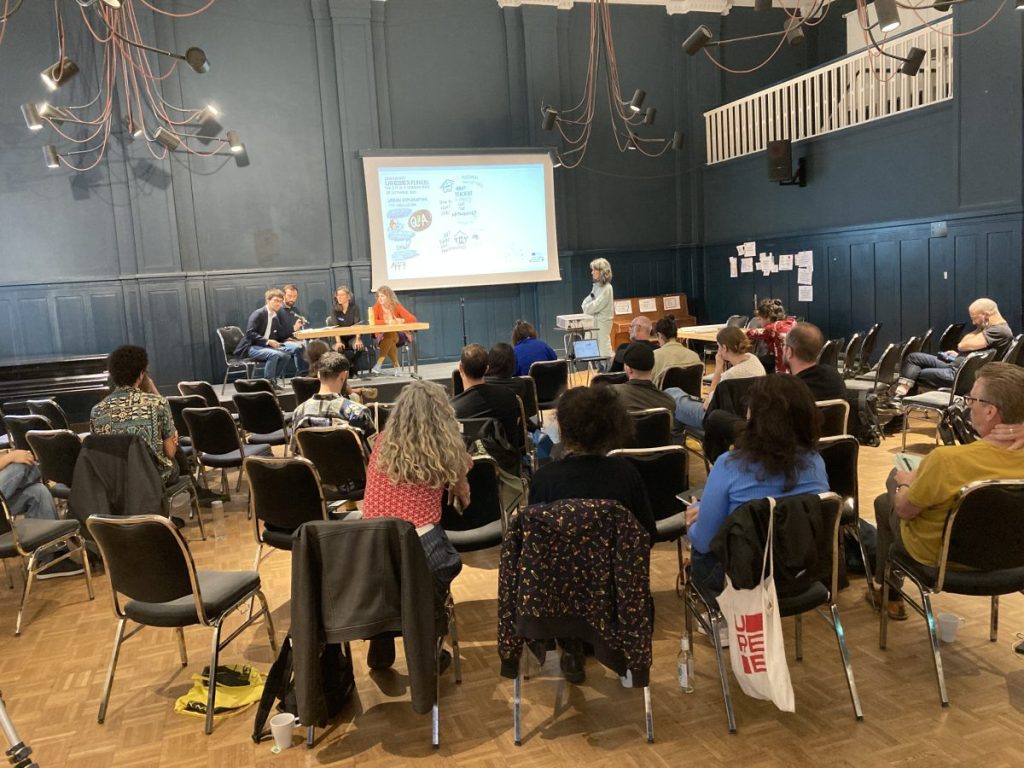
NEIGHBOURHOOD COSMONAUTS. A GROUP OF YOUTHS EXPLORING SEVERAL DIFFERENT CITIES INTO ONE SINGLE NEIGHBOURHOOD – Codici, Guido Belloni
What effects do the misleading narratives of some neighborhoods produce in the empowerment paths of its inhabitants, especially young people, children, and adolescents? How can misleading narratives about the hostility of some neighborhoods be countered?
The contribution finds the intersection between the condition of youth and the urban peripheral environment an interesting lens to read the complexity of the present. It moves from the theory of neighborhood effects, partly rejecting the simplification for which the collective and media imagination of some neighborhoods would have concrete effects on the reproduction of inequalities – we do not look here at all the determinants of socioeconomic inequality.
However, there are some areas in which this causal link appears more clearly. For example, at the educational level, the dynamics of exclusion and ghettoization of schools may have long-term effects on young people’s educational paths and careers. Or on the cultural level, where the distance from the cultural infrastructures of the city center (or centers) substantially reduces the possibilities to access the systems of opportunities for many youths. Or, again, on the social and relational level, the targeting and labeling of youngsters overlap with the issue of urban security and the alleged social danger of some groups into some specific neighborhoods. All these dynamics have a precise spatial component and are the consequence of profiling the most undesirable subjects, which very often coincide with young adolescents with migratory backgrounds.
The exploration of neighborhoods involving youths is, according to the writers, a way to demolish prejudice, but also to resize the myth of social redemption. The methodology used is the immersive observation of the local urban environment; the independent exploration, without the mediation of an adult, aiming at the direct experience of what it means to move into a neighborhood that is considered and depicted as dangerous; the collection of direct testimonies of those who live in a neighborhood, placing the groups of youth leading the exploration in a condition of suspension of judgment and active listening. These are, in our opinion, practices, and attempts to build a more aware citizenship, but also to support youths to process their own empowerment.
The contribution aims to support a critical reflection on participatory methods in support of local policymaking – in the case presented, we are working within the framework of a municipal program that addresses young people at a local level. We will describe the experience of an urban exploration carried out in Milan with some classes of young people (ages 11-13 and 14-17 years) in the district of San Siro, a neighborhood characterized by the presence of different fragilities that stratified over time, where an interesting rap/trap scene has been developing in recent years.
A COLLECTIVE STORY OF URBAN EXPLORATION – Kitti Baracsi (Senior Atlantic Fellow for Social and Economic Equity, LSE International Institute, periferías dibujadas) and Tuline Gülgönen (orangotango//ecologías del futuro)
Warning: due to a tecnical glitch the video is mising the introduction of Kitti Baracsi. Find here additionalm info about her: Kitti Baracsi – Senior Atlantic Fellow for Social and Economic Equity, LSE International Institute, periferías dibujadas. Educator, researcher, curator of collective learning-based community and cultural initiatives. She holds degrees in Pedagogy, Aesthetics and Communication. Her main focuses are urban inequalities, feminist collective practices and rethinking and changing knowledge production. With a background in critical pedagogies and ethnographic research, since 2006, she has been involved in education and community work with marginalised communities, including Roma and migrant communities -, and in research on education, housing, gender and migration in Hungary, Italy, Portugal and Spain. Since 2014, she has been working on collective research and creative interventions with children and young people in Hungary, Italy, Spain and Portugal (periferias dibujadas). Currently, she also co-coordinates a community initiative for intergenerational solidarity in Lisbon called Fazer do bairro a nossa casa.
As part of several collectives (periferías dibujadas, orangotango, ecologias del futuro), we’ve been working for 15 years on children and young people’s perceptions of the city, using critical mapping, storytelling, video, and sound- experiments, among other methods. Our projects take place in academic and activist contexts in Mexico, Germany, Italy, Hungary, Spain, and Portugal. They share a critical pedagogy and activist methods. They are inspired by popular education and a long tradition of working with children to explore their environment.
At a time when interest in the integration of children in the city is growing in many urban contexts, in more or less official settings, we’d like to share some of the lessons we’ve learned through our own and other’s work with children and young people exploring their environment, as well as the core principles that seem crucial to us. During our presentation, we will share some of our own action research projects and companion projects to open a dialog with the participants.

Session 5: URBAN EDUCATION AND CITIZEN PARTICIPATION
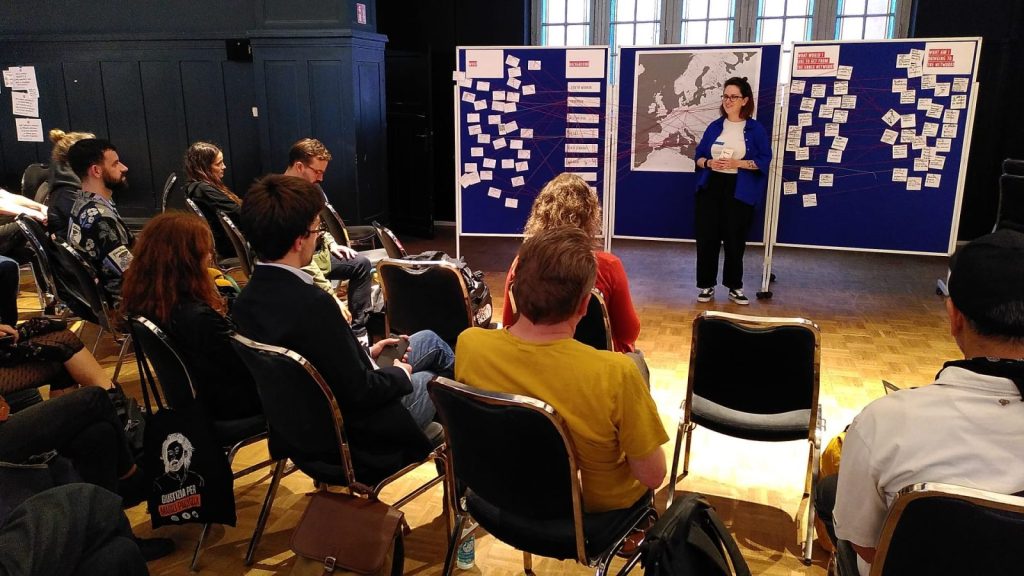
LANDSCAPE AND HERITAGE EDUCATION IN URBAN AND PERIURBAN CONTEXT – Paola Branduini, Camilla Casonato, Politecnico di Milano
National and European guidelines promote heritage education as a vehicle for the development of forms of active citizenship, sustainable lifestyles, appreciation of cultural diversity, and protection of common goods. At the same time, European policies invite to connect the cultural value of landscape to the perception of populations and improve the landscape quality because it concerns all living places (ELC, 2000). In this framework, landscape as heritage education is configured as a transdisciplinary educational approach that can hopefully be applied in all kinds of physical and social contexts, even those characterized by aspects of marginality and fragility. These premises make current a collective effort to build, both on a national and European scale, good practices and methodological indications that:
- effectively connect education to heritage and the cultural landscape
- can address ordinary, marginal, or degraded landscapes;
- are based on a transdisciplinary co-design effort involving universities, schools, and institutions;
- they can build new shared representations of living contexts by rewriting the values recognized by one or more cultures;
- promote a participatory and inclusive approach and an innovative use of technologies;
- build effective synergies between heritage education, ecological transition, and landscape protection.
The contribution will present two different research experiences focused on the aforementioned topics: the first (concluded) focused on the theme of urban peripheries and funded within the framework of social and public engagement research at Italian universities (SCAR- School activates resources); the second (ongoing) dedicated to peri-urban and rural landscapes on a European scale and funded by an ERASMUS+ KA220-SCH call (EduLand for transition).
INTERLINKING MEDIA EDUCATION, YOUTH WORK AND URBAN PRACTICE. EXPERIMENTING WITH SOCIAL DESIGN TO DEVELOP AN INCLUSIVE ROSTOCK CITY PORT – Anton Schunemann, MA Rostock University (+ Sascha Hofmann and critical form)
In the spring and summer of 2023, the University of Rostock project opened a media node, and the local port authorities and various NGOs experimented with urban practice methods on how to develop new ideas and educational setups for the old city port. Part of this process is to come up with creative usage ideas for how to develop shipping containers together with young people into spaces they can claim in the middle of the city. At the same time, we promote co-design workshops dedicated to finding creative ideas on how to use the concrete wasteland of the historical port site. This process involves working with local kids, adolescents, and students by thriving on interdisciplinary as well as creative approaches. The historical port “Stadthafen” is situated in the heart of the Baltic city, pretty far from any beaches or intense tourism. In the GDR era, it was forbidden for locals to walk around there because of its military usage. Nowadays it is mostly being used for weekend walks, jogging, and casual events. Neighbors, especially young people and families, want to make use of all the precious space, turning it into a green lung. Over the years various political visions of shiny new buildings and events such as new theatres, museums, cruising ship docks, bridges, horticultural shows, shopping malls, etc. have been promoted and then canceled or forgotten. Together with the port authorities, we try to develop the area through small-scale changes by focusing on pilot projects, educational laboratories, and a new sense of collaboration. The result of this process has been the creation of the initiative “MeinHafenDeinHafen/ #MHDH” (MyPortYourPort). We would like to contribute to the conference by sharing experiences made in our social design workshops with the collective criticalform, which will take place in May and June of this year. The idea is to focus on spatial explorations as emancipatory practices to empower local youth by using innovative media tools and co-creation methods. In addition to researching the port background, we use digital measurements, VR glasses, and other media and design tools to develop models for usage ideas. We would like to share our experiences with the attendees of the conference, write more about the process that we have embarked on, and profit from all of the input others can bring to all the challenges and opportunities we encounter. The form of the presentation will be derived from the results of the workshops.
EMPOWERING YOUTH THROUGH EDUCATION: UNIVERSITY FIELD UNIT AND MUTUAL EMBODIED LEARNING – Jens Brandt
The paper is motivated by evidence showing that youth (millennials) have a historically low satisfaction with democracy especially driven by economic inequality and that the climate crisis will make this even worse. I will argue that this is also a social climate crisis: A widespread feeling of not being free or able to act – (or unaware of being) able to challenge the status quo.
The social climate is here understood as socially produced spaces on a spectrum from informal settlements, and urban public spaces over learning and working environments to online spaces such as social media. What is central to this paper is how the depletion of such spaces reduces the possibility for new forms of political engagement and democratic expression to emerge.
The paper will use this need for social climate change to discuss how to empower youth through education. It will present two intertwined concepts: University Field Unit or UFU and “mutual embodied learning” to discuss how the concepts could be developed further and possibly form the basis for new collaborations:
- The backbone of the project is an “educational link” between higher educational institutions and local secondary schools. Based on the new curricula and learning methods empowering hard-to-reach local youth and giving university students a more hands-on learning experience.
- A local hub – a physical space to exchange knowledge and catalyze new ideas, networks, and initiatives. This allows a longer-term and deeper involvement of local communities including civil society.
- Co Research – develop new transdisciplinary research projects using the needs and possibilities that emerge during the initial work with youth and local communities. It allows involving youth as co-researchers as part of their learning process.
I contextualize these concepts with the ideas of service learning or community engagement and show how they add new elements where the universities play a more proactive and independent role as catalysts of community development through the link to local secondary schools. Significant examples of experiments include game-based explorations, sensory mapping of spaces of possibilities, using group dynamics to develop a common vocabulary, and organizing interventions in public spaces. Feedback from students and the community was then used to locate new spaces of possibilities for empowering youth through education.
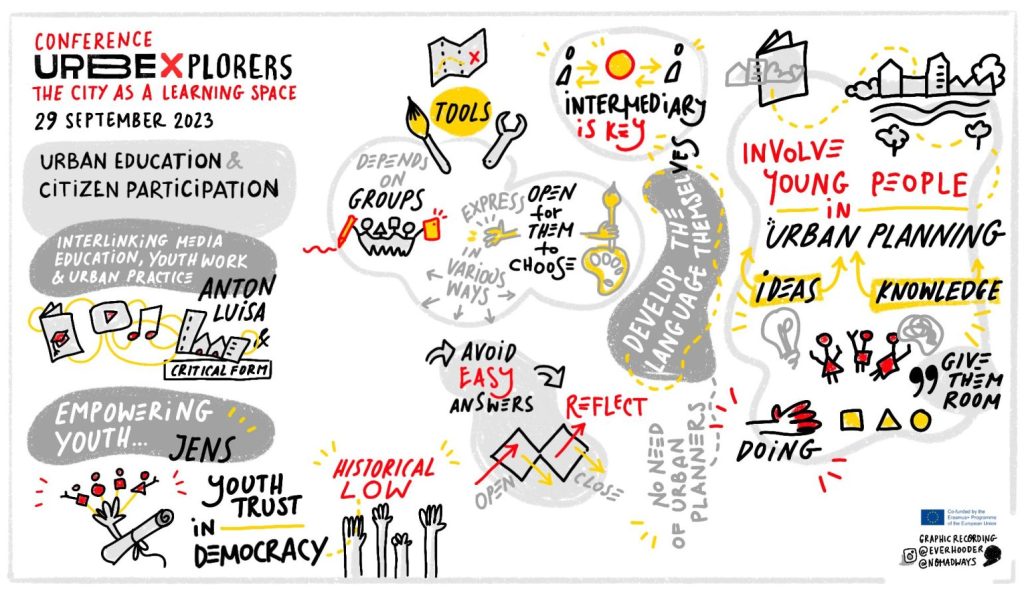
Session 6: WEAVING THE URBEX NETWORK
UrbeEX Network Session was addressed to all educators, youth workers, researchers, activists, and urban explorers interested in the process of collectively discovering, experimenting with, and implementing methods and tools to engage young people with their surroundings. It was designed as a proactive channel to share and exchange tools, expertise, and good practices of urban exploration with youths. Like-minded actors were invited to join in order to plan and conceptualize the format of the future network through exercises of mapping, visualizing crossing trajectories, and shared resources, leading to a final conclusion about the event.
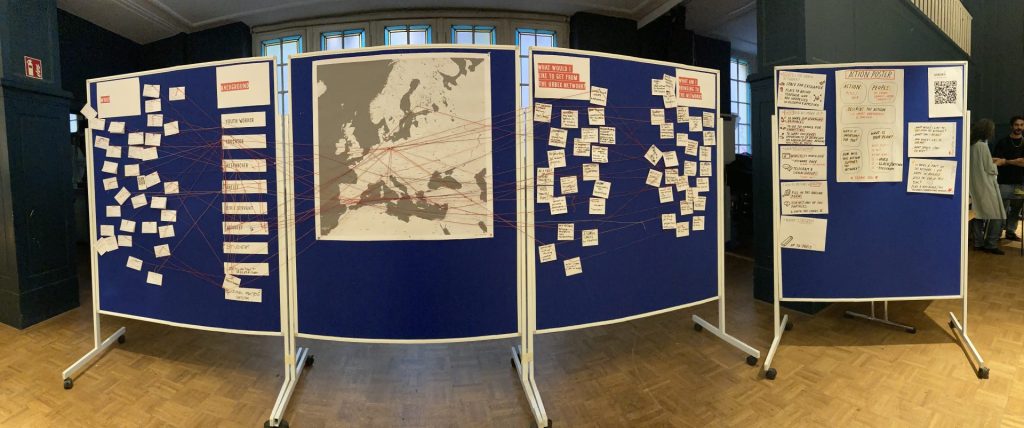
Day 1 and 2 (28th-29th September 2023)
Parallel Sessions
During the two days of the conference, we envisaged activities allowing decompression and exchange among participants. More specifically, these included one exploration exercise in the surrounding neighborhood using the Itinerants card game (on Day 1), and one open discussion about the topic of UrbEXplorers using the OST method (Day 2).
